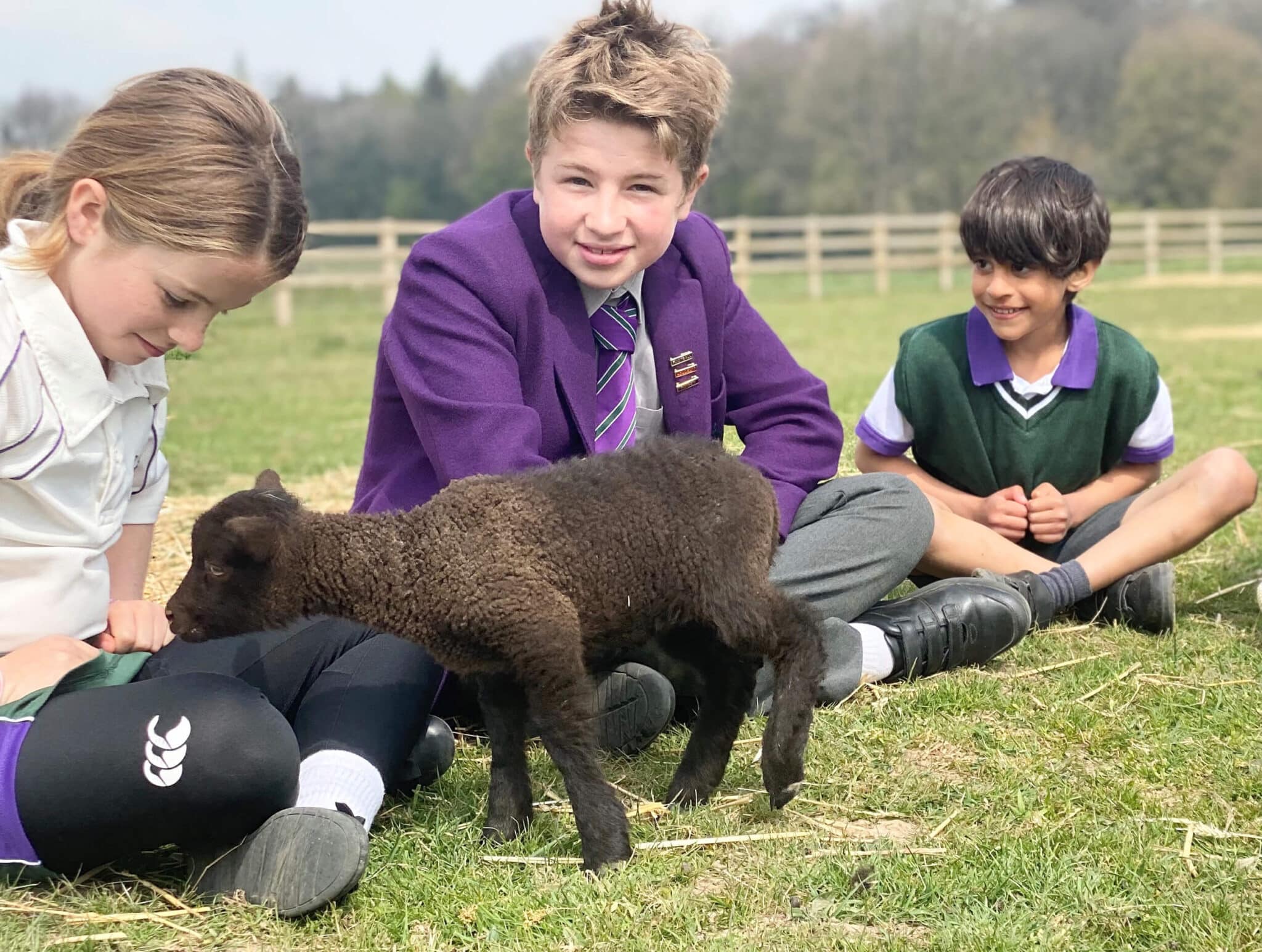The Headmaster of Hertfordshire’s York House School, Jon Gray, writes about the enduring beauty of farm life
Our school, on the outskirts of Croxley Green, is home to more than 50 different animals including donkeys, ponies, sheep, pigs, micro pigs, tortoise, goats and pygmy goats. Our onsite smallholding is a source of pride and joy to all of our pupils and staff who each take an active role in their care. Our animals are also an important part of daily life at school for our children. They are not farmed; they are here until retirement and most of them are rescued animals as part of our environmental and sustainability agenda.
None of our animals live alone. We rotate them around several different paddocks over the course of each year and our children understand that it is also good for the animal’s mental health to have variety and companionship in their lives. Regular interaction with the animals at York House has developed a sense of calm and self-reliance within our school community. It is also inspiring curiosity and adventure as our children learn some key life skills and develop a sense of responsibility by caring for the animals.

Animals are some of the best listeners around and, in many cases, they have become valuable companions for a number of our pupils. Our children get the chance to talk to the animals about their day and to share their emotions and thoughts without fear of judgement. We have also found that caring for the animals gives our children an increased level of maturity as they appreciate how much the animals rely on them for their food and general care. This has also translated into the classroom environment with a number of children demonstrating a heightened positive attitude in class after spending quality time with the animals.
We run a regular smallholding club at break times and four after school clubs to allow more children to escape the bustle of the busy classroom environment and engage with the animals one to one, on a daily basis. Experts have long praised the benefits of animal therapy, and in a world where childhood mental health cases are still rising, many children find they can connect with animals more easily than people. For those pupils who need to share their feelings and emotions further, we have also created extra sessions named ‘Donkey Downtime’. This is a structured forum in which pupils can share, reflect and discuss matters during their day at school.
Most recently we have welcomed a new Shetland ram, Mr Jigsaw, into our smallholding as we prepare for another successful year of lambing. Mr Jigsaw is quite shy, and the children have enjoyed building his confidence to the stage where he will now take feed from their hands. With his mischievous personality, Mr Jigsaw also likes to spend time in the bushes finding the best food, stripping the bark from fallen trees or standing proud on the small mound in the centre of the field. He will always come running over at the sight of food and will even stamp his feet if you walk past without feeding him!

The new ram has been settling into his new surroundings well, and six of our ewes have been tupped. As such, our pupils are now getting very excited about the birth of the new lambs, which are expected around May this year. We can’t wait to take the children out to witness new life being born and to watch the lambs as they learn to walk, play and feed. In other news, we have also just introduced Ronald, the Lionhead Rabbit into the fold – he has had a huge impact on the children, with his calm, kind nature.
We are continually looking for ways to develop our smallholding in the future and to rescue more animals. In spring 2022 we opened our very first trout pond on site. Last year, we also became a release site for injured and rescued animals, so we have seen barn owls, a herd of fallow deer and a sparrowhawk released on the site, alongside a resident small herd of deer inside a large and wooded paddock. These deer are not domesticated, but will remain as wild animals. Being a release centre for rescued and previously injured wild animals is an exciting development, and a resident herd of Fallow and Chinese Water deer is of benefit to those animals, alongside adding to the experience of children viewing them in a natural, but contained habitat.









